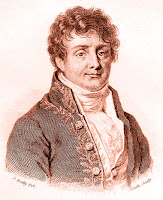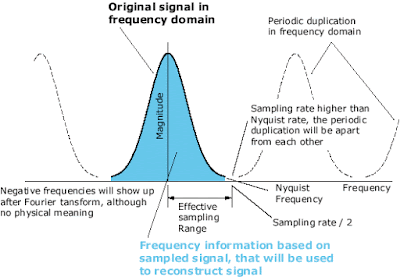What Is Spectrum Analyzer And How Does It Work?
Discovery of Fourier Transforms:
Signals cannot just be represented in the time domain but they can also be seen and represented in other domains as well. A French mathematician by the name of Jean-Baptiste Joseph Fourier calculated and began viewing signals in a very different domain unlike how we normally view signals as in. This was the frequency domain, and it turned out that this domain was like a Pandora box that opened up every detail of a signal we are transmitting or receiving.
With the rise and discovery of the Fast Fourier Transform (FFT), it opened the new ways to extract the information about a signal. The advent of ADCs, powerful memory, faster processors, and FFT, signal processing is just a mere difficulty right now.
New FFT based devices overruled the previously swept-tuned instruments which produced non-continuous spectrum whose instantaneous power is displayed as a function of time.
Intro to Frequency Domain Devices:
We all are well aware of what oscilloscope is and for what is it used for. If you don't, well oscilloscope is a device that is used to measure the input signal from a function generator or from a circuit or even from an audio output, as a function of time.
Spectrum Analyzer is a similar device but here the input signal is measured versus frequency. Well this device is kinda useless for the electric circuit builders, computer engineers etc who really don't care about signals but is a great device for RF engineers, Wireless transmitters, and Networking.
What does it analyzes?
The time domain devices like oscilloscope cannot determine the features of a signal such as harmonics, bandwidth, background noise/distortion, power of a signal, etc; a frequency domain device is needed to analyze all these features of the wave. These features of a signal are important to study because they are used in categorization of the electronic device that is producing such a signal for analyzing the frequency spectrum, radio frequency, RF and audio signals. Spectrum Analyzers are often used in receiving a signal like in a case of FM, AM, GSM burst, Bluetooth signals and other signals from many other network broadcasters.
A fun fact 😃: You can receive a FM or AM signal using Spectrum Analyzer by tuning in to that frequency.
Why Real-Time Spectrum Analyzer (RTSA) over Traditional?
In RTSA, as the input signal is received, the continuous stream of data is transformed using FFT enabling the analyzer to produce a real-time frequency spectrum in a defined bandwidth without gaps, capturing every event in a signal. RTSA does this by continuously sampling the data while running the FFT calculations very fast (virtually in Real-Time) and simultaneously to retrieve the frequency spectrum from the time domain. Therefore, the frequency spectrum we see on the display of the analyzer is a continuous spectrum. Sufficient memory with a fast processor and ADCs is required to enable acquisition over the desired bandwidth in FFT based analyzers.
A wow fact 😯: FFT calculation rates are commonly around 250k FFT per second.
The receiver and ADCs used in conjunction with FFT reduces the sampling rate which enables the FFT based analyzers like RTSA to process all the samples with 100% duty cycle. So not only the Nyquist sampling theorem is satisfied but also no information is lost during signal processing. This is known as an analyzer working in 'Online Real-Time' mode which means it produces frequency spectrum without gaps unlike the traditional analyzers which work in 'Offline Real-Time' mode.
Traditional analyzers sample the bandwidth of interest at once without sweeping to process. So the signal is sampled in real-time, however, it is stored in the buffer for offline processing which means some of the information is skipped or missed during processing.
Now as the FFT calculation rates are too high extracting more information about the spectrum than needed that is to be displayed and can be viewed by a human eye, new methods of display like Persistence Spectrum and Real-Time Spectrum are developed.
USB based FFT Spectrum Analyzers can also be made at home or purchased at a cost of $20 which includes an antenna and a USB dongle to which which the antenna is attached to and USB dongle gets connected to PC. Using software such as AirSpy SDR, we can easily capture signals around us and analyze them. Such programs uses the computer's inbuilt processor, memory, and ADC to perform the analysis. Pretty cool, right? This whole USB based analyzer is known as RTL-SDR, where SDR stands for Software Defined Radio and RTL for Register Transfer Level.
Getting back to RTSA it is the most commonly used FFT based analyzer which can be easily found and used in labs, research rooms, and in many network developmental agencies for analyzing signals to extract information, in transmission, and in modulation.
Harry Nquist Sampling Theorem:
According to whatis.techtarget.com -
Aliasing can be removed using Anti-Alias filters.
Thank you for reading this article. 😊 Like, recommend, and share this article with your friends. Please feel free to leave a comment if you with your thoughts and if you find any error in the article.
 |
| Fourier Transforms used in transforming a time domain signal into frequency domain. Credits: mriquestions.com |
 |
| Joseph Fourier |
Signals cannot just be represented in the time domain but they can also be seen and represented in other domains as well. A French mathematician by the name of Jean-Baptiste Joseph Fourier calculated and began viewing signals in a very different domain unlike how we normally view signals as in. This was the frequency domain, and it turned out that this domain was like a Pandora box that opened up every detail of a signal we are transmitting or receiving.
With the rise and discovery of the Fast Fourier Transform (FFT), it opened the new ways to extract the information about a signal. The advent of ADCs, powerful memory, faster processors, and FFT, signal processing is just a mere difficulty right now.
New FFT based devices overruled the previously swept-tuned instruments which produced non-continuous spectrum whose instantaneous power is displayed as a function of time.
Intro to Frequency Domain Devices:
 |
| Keysight Oscilloscope |
We all are well aware of what oscilloscope is and for what is it used for. If you don't, well oscilloscope is a device that is used to measure the input signal from a function generator or from a circuit or even from an audio output, as a function of time.
 |
| FFT based Rohde-Schwarz Spectrum Analyzer |
Spectrum Analyzer is a similar device but here the input signal is measured versus frequency. Well this device is kinda useless for the electric circuit builders, computer engineers etc who really don't care about signals but is a great device for RF engineers, Wireless transmitters, and Networking.
What does it analyzes?
The time domain devices like oscilloscope cannot determine the features of a signal such as harmonics, bandwidth, background noise/distortion, power of a signal, etc; a frequency domain device is needed to analyze all these features of the wave. These features of a signal are important to study because they are used in categorization of the electronic device that is producing such a signal for analyzing the frequency spectrum, radio frequency, RF and audio signals. Spectrum Analyzers are often used in receiving a signal like in a case of FM, AM, GSM burst, Bluetooth signals and other signals from many other network broadcasters.
A fun fact 😃: You can receive a FM or AM signal using Spectrum Analyzer by tuning in to that frequency.
Why Real-Time Spectrum Analyzer (RTSA) over Traditional?
In RTSA, as the input signal is received, the continuous stream of data is transformed using FFT enabling the analyzer to produce a real-time frequency spectrum in a defined bandwidth without gaps, capturing every event in a signal. RTSA does this by continuously sampling the data while running the FFT calculations very fast (virtually in Real-Time) and simultaneously to retrieve the frequency spectrum from the time domain. Therefore, the frequency spectrum we see on the display of the analyzer is a continuous spectrum. Sufficient memory with a fast processor and ADCs is required to enable acquisition over the desired bandwidth in FFT based analyzers.
A wow fact 😯: FFT calculation rates are commonly around 250k FFT per second.
The receiver and ADCs used in conjunction with FFT reduces the sampling rate which enables the FFT based analyzers like RTSA to process all the samples with 100% duty cycle. So not only the Nyquist sampling theorem is satisfied but also no information is lost during signal processing. This is known as an analyzer working in 'Online Real-Time' mode which means it produces frequency spectrum without gaps unlike the traditional analyzers which work in 'Offline Real-Time' mode.
Traditional analyzers sample the bandwidth of interest at once without sweeping to process. So the signal is sampled in real-time, however, it is stored in the buffer for offline processing which means some of the information is skipped or missed during processing.
Now as the FFT calculation rates are too high extracting more information about the spectrum than needed that is to be displayed and can be viewed by a human eye, new methods of display like Persistence Spectrum and Real-Time Spectrum are developed.
USB based FFT Spectrum Analyzers can also be made at home or purchased at a cost of $20 which includes an antenna and a USB dongle to which which the antenna is attached to and USB dongle gets connected to PC. Using software such as AirSpy SDR, we can easily capture signals around us and analyze them. Such programs uses the computer's inbuilt processor, memory, and ADC to perform the analysis. Pretty cool, right? This whole USB based analyzer is known as RTL-SDR, where SDR stands for Software Defined Radio and RTL for Register Transfer Level.
Getting back to RTSA it is the most commonly used FFT based analyzer which can be easily found and used in labs, research rooms, and in many network developmental agencies for analyzing signals to extract information, in transmission, and in modulation.
 |
| Harry Nyquist |
According to whatis.techtarget.com -
Suppose the highest frequency component, in hertz, for a given analog signal is f. According to the Nyquist Theorem, the sampling rate must be at least 2f, or twice the highest analog frequency component. The sampling in an analog-to-digital converter is actuated by a pulse generator (clock). If the sampling rate is less than 2f, some of the highest frequency components in the analog input signal will not be correctly represented in the digitized output.
 |
| Nyquist Sampling Theorem. Credits: efunda.com |
When such a digital signal is converted back to analog form by a digital-to-analog converter, false frequency components appear that were not in the original analog signal. This undesirable condition is a form of distortion called aliasing.
Aliasing can be removed using Anti-Alias filters.
Thank you for reading this article. 😊 Like, recommend, and share this article with your friends. Please feel free to leave a comment if you with your thoughts and if you find any error in the article.








 #ref-menu
#ref-menu
Post A Comment
No comments :